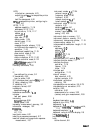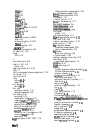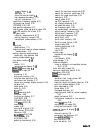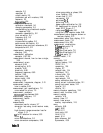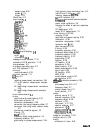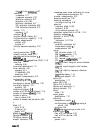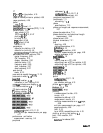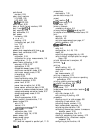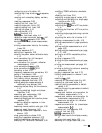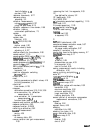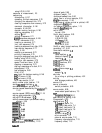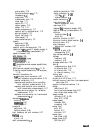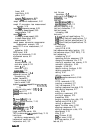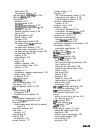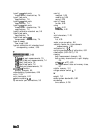
searching for bandwidth, 2-35
searching for maximum amplitude, 2-32
searching for
minimum amplitude, 2-33
sequencing, 3-17
setting center frequency with markers,
2-28
setting CW frequency using markers, 2-31
setting display reference using markers,
2-30
setting electrical delay using markers, 2-31
setting frequency span with markers, 2-29
setting measurement parameters, 2-3
setting start frequency with markers, 2-27
setting stop frequency with markers, 2-27
setting the frequency range, 2-3
setting the measurement type, 24
setting the source power, 24
setting up a color printer, 4-6
solving problems with disk storage, 4-43
stopping a sequence, 2-70
storing a sequence on a disk, 2-74
subtracting memory trace from
measurement data trace, 2-8
test sequencing, 2-68
test with
Iimit
lines,
2-46
titling
the active channel display, 2-9
titling
the displayed measurement, 4-29
tracking amplitude, 2-35
using
analyzer
display markers, 2-17
using continuous and discrete markers,
2-17
using delta (A) markers, 2-20
.:.:.:.:.:.~.:.:...:.:.~:.:“”
,..
,..*
:
;‘““....;.:‘.::,:,
using
:~~~~~
to
.&jvate
a
tied
../i
/./..
;.
.:.:
. . . . . . .
..-........-.
reference marker, 2-23
using polar format markers, 2-24
using the tuned receiver mode, 2-66
;
.,
,.,.,.,.,.,.,.,.,.,.,.,..
_
.,.,
,.
_
./.....;
. . . . .
.,.,,.,.,.,.,.
using
the
:~~~~~~~
key
to
a&iv&e
_,,:,:
_,.
:.,.:.,.:.:.:.:.::~.,.:~~~~.,.:.:~.:~.:.:.:.:.:.:.:.:.:.:.:.~,~.:.~;,;~;;~,.‘_,
i
,,,,
l.,ss
,/
a fixed reference marker, 2-22
viewing both primary channels, 2-6
viewing plot
IIIes
on a PC, 4-20
viewing the measurement data and memory
trace, 2-7
procedures
error-correcting measurements, 5-8
LC
to RF isolation for mixers, 3-33
mixer conversion compression, 3-28
mixer RF feedthrough, 3-35
power meter calibration for mixer
measurements, 3-6
processing
details,
6-5
programming, 11-15
programming interface, 11-15
programming specifications, 7-17
programs
example, 1
l-7
P? status notation,
l-9
purging a sequence from disk, 2-75
purpose and use of different error-correction
procedures, 5-5
Q
quadrants plotted, 4-28
quarter page plots, 4-28
B
rack mount cabinet, 11-4
rack mount flange kit
with handles option, 1-14
without handles option, 1-13
range
dynamic:how to increasing, 5-56
time domain, 6-138
ratio calculations, 6-5
ratio measurement in channel 1 and 2, 2-8
raw data arrays, 6-6
R channel and source calibration connections,
3-8
R channel connector locations,
l-6
R channel inputs, difference between internal
and external, 3-4
R channel power offset, 3-4
real
format, 6-37
rear panel
features and connectors, l-11
rear panel connectors, 7-17
recalhng
a
fiIe,
4-42
receiver, 6-3
receiver calibration, 5-12
connections, 3-14
receiver calibration procedure, 5-39
receiver configuration option, 1-13
receiver crosstalk
reducing, 5-57
receiver noise floor
reducing, 5-56
reduce
averaging factor, 5-52
number of measurement points, 5-52
receiver noise floor, 5-56
reducing
receiver
crosstaIk,
5-57
trace noise, 5-57
reducing noise, 6-51
averaging, 6-51
IF bandwidth, 6-52
smoothing, 6-52
reference
(10 MHz) adjust, l-11
(10 MHz) output, l-11
Index-20



